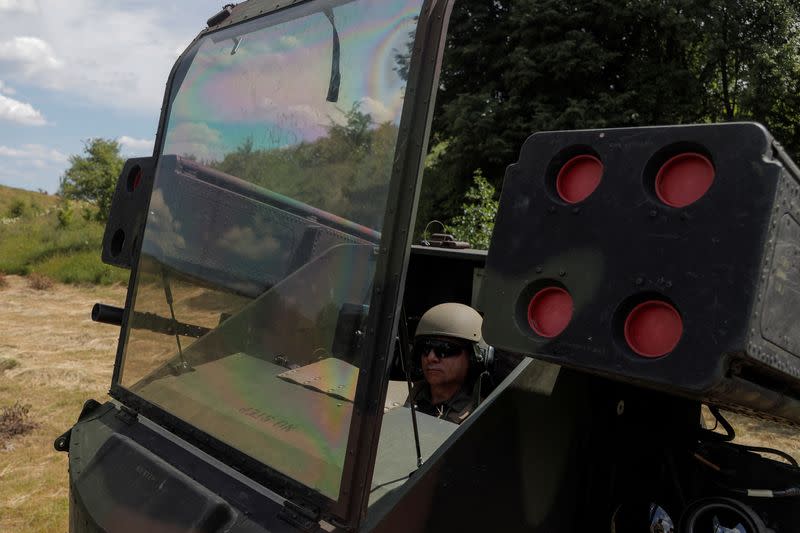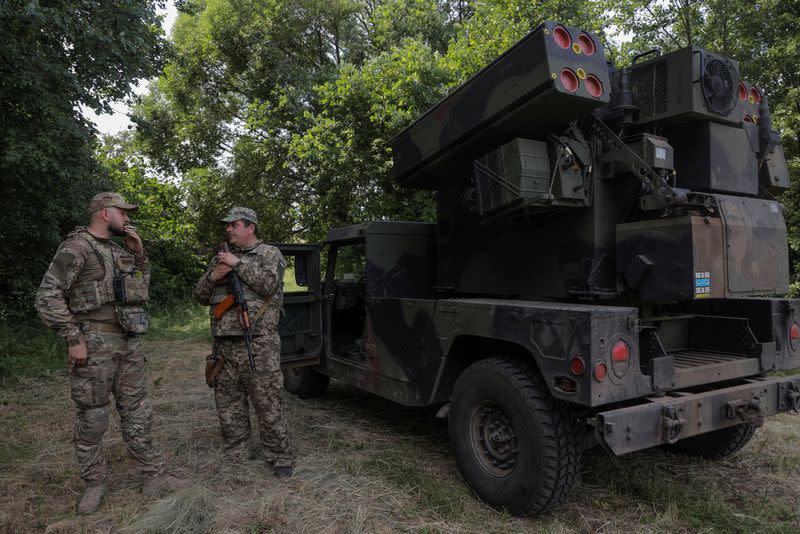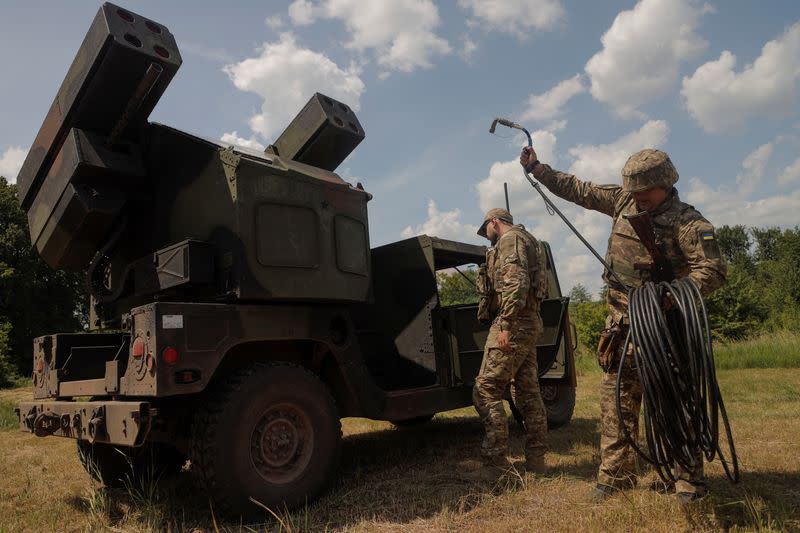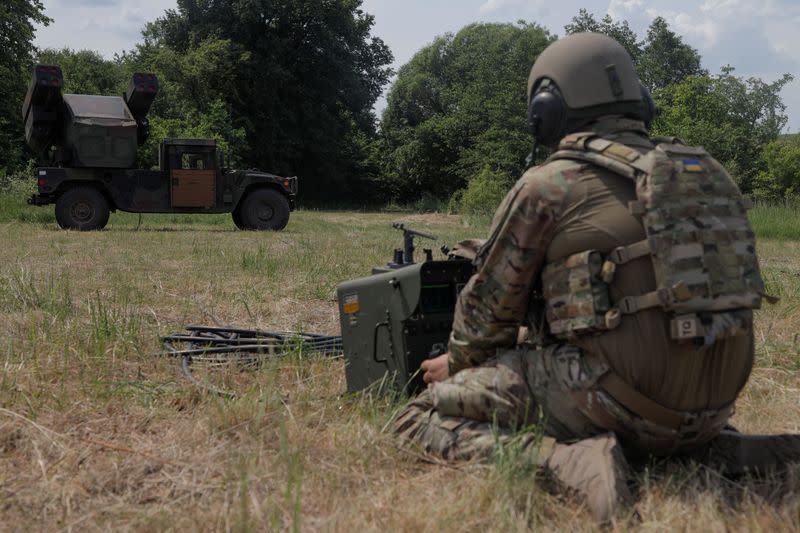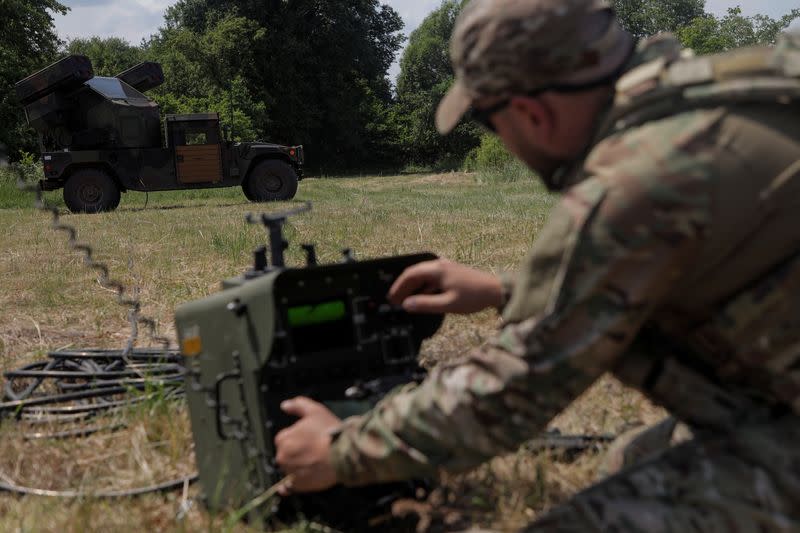Ukraine builds layered air defences as Russia ramps up strikes
By Tom Balmforth
NEAR KYIV, Ukraine (Reuters) - At a glance on a clear summer's afternoon, the U.S.-made Avenger air defence system is barely visible in the shadow of trees at the end of a dirt track outside Kyiv.
The short-range unit is an important part of a three-layered air defence network that Ukraine is trying to develop with a range of highly sophisticated Western systems to thwart Russian air attacks.
Russia has unleashed regular long-distance missile and drone attacks since October, but it seriously increased strikes in May as Ukraine prepared for a counteroffensive this month.
The strikes, which regularly kill civilians, look at least in part aimed at depleting air defence stocks so that fewer systems can be used to protect troops trying to advance under Russian air superiority, Kyiv officials say.
"The most difficult is an attack by various types of aerial targets," said the Avenger unit's commander who goes by the call sign "Architect", his pre-war profession.
"When they arrive in one night, both (drones) and cruise missiles fly by, that's the most difficult."
He leads a six-man team that took up positions two weeks ago after being trained by U.S. military instructors in Europe. They are yet to shoot down any missiles or drones.
They join an unfolding air battle that has played out over several weeks during which Ukraine has reported an extraordinary rate of downed drones and missiles, including hypersonic ones.
On Friday, Ukraine said it shot down all six cruise missiles and six hypersonic Kinzhal missiles fired at targets in and around the capital.
But strikes still regularly slip past defences. Last Wednesday, three civilians were killed in a missile attack in Odesa. The day before 11 were killed in a strike on President Volodymyr Zelenskiy's hometown.
'RACE AGAINST TIME'
Though it has dropped out of headlines as Kyiv has pressed for F-16 fighter jets from the West, Ukraine is still regularly asking for - and receiving - air defence missiles to replenish stocks, said Yuriy Sak, adviser to Ukraine's defence minister.
"Russia's tactic is using cheap drones in order to exhaust our air defences. It's almost like a race against time. Who's going to run out first? The Russians with their missiles or the ones we get from our allies?" he said.
Washington has supplied at least 12 Avenger systems to Ukraine. The Avenger is a rotating turret with eight missiles mounted on the back of a Humvee, which makes it highly mobile.
"One of our top priorities, when it comes to transforming our armed forces and building up our air defence capability is creating a three-layered air defence system," said Sak.
The Avenger, like hand-held Stinger missiles, are at the short-range end of the three layers. U.S.-made Patriot systems are at the long-range end. Avengers have a range of up to 5 km. Patriots have a 3 km minimum range and a maximum of 80 km.
There is greater mobility at the short end to counter targets and it is also much cheaper than firing expensive salvos of Patriot missiles, Sak said.
The Avenger is effective near the battefield, but there are too few of the systems to go around, he added.
In a bid to build up short-end capabilities, Ukraine is pressing Australia to supply four-wheel-drive Hawkei vehicles that can be mounted with air defences and used in the same way as Avengers, Sak said.
In the month of May alone, the Air Force reported shooting down 149 cruise missiles, 399 drones, seven hypersonic Kinzhal missiles, three ballistic missiles as well as 11 Iskander missiles of two different types.
By contrast in April, the Air Force said it had shot down 73 drones and 21 cruise missiles.
The unit commander near Kyiv said he was constantly aware of his responsibility to do his best to protect the roughly 3.5 million people living in Kyiv, and that they were on duty round the clock ready to respond.
(Reporting by Tom Balmforth and Sergiy Karazy; editing by Angus MacSwan)
